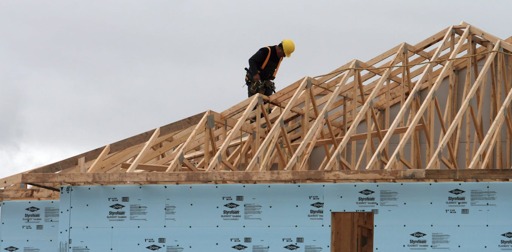Authors:
Kareman Yassin | Assistant Professor, Hitotsubashi University Maya Papineau | Associate Professor of Economics, Carleton University Nicholas Rivers | Canada Research Chair in Climate and Energy Policy, L’Université d’Ottawa/University of Ottawa
Excerpt:
Canada has set an ambitious goal to reduce greenhouse gas emissions by 45 to 50 per cent below 2005 levels. This puts pressure on the residential and commercial building sector, which is responsible for about 18 per cent of national greenhouse gas emissions, to help meet this target.
Since most of Canada’s 16 million homes are expected to still be in use by 2050, the path to net-zero requires upgrading existing homes, not just constructing new net-zero ones.
To address this, retrofit programs that improve home energy efficiency have become one of Canada’s main strategies to cut emissions in the housing sector. These programs focus on upgrades like air sealing, enhanced insulation, upgrading heating and cooling systems and installing energy-efficient windows and doors.
But do these programs deliver on their promises of lower bills and reduced carbon emissions? Our recent study, forthcoming in Energy Economics, examined the outcomes of the federal ecoENERGY home retrofit program, a predecessor to the Greener Homes Initiative.
Our findings shed light on where the program succeeded, where it fell short and what this all means for Canadian families and policymakers moving forward.
Sounds about right. We took advantage of the Greener Homes Grant a few years ago to get all our windows replaced in our late 70’s build. It’s a very long process where you have to pay up front for an inspection/evaluation from one of their approved providers, which are often booked months in advance, then you have to pay up front for all the work done. In our case we paid 50% up front then had to wait a few months for the work to be done, then had to book another inspection/evaluation. If one wants get multiple qualifying items done they all have to happen between both evaluations. After that second evaluation you can ask to close it out and receive the grant. Most, but not all of the cost of those evaluations is covered when the grant is approved. IIRC the grant ended up covering about 20% of the cost, but it was over a year to go through the whole process. The Greener Homes Loan came out after we had already received our grant, and if we wanted to do more work to take advantage of it now we’d be on the hook for another post-work evaluation. It is a step in the right direction since you it helps cover some of the up front costs of eligible retrofits. Sask also had a home renovation tax credit available at the time(conveniently implemented just after I built my shed which would have qualified) so it was nice to double dip and get another 10% of the cost rebated, but it’s also something where a person has to pay up front and wait for tax time to see the benefits.
Its great for people that can afford to have the work done and in our case it was probably the difference between us being able to do all our windows at once vs just doing the high priority ones and leaving others for later. It’s pretty much worthless for so many that are already struggling day to day and would probably see more energy savings than those who can otherwise afford to keep up with modernizing their home.
I feel like I’ve also seen the same effects of overestimating energy savings that the article brings up. It’s like they’re standard is a home that’s 50+years old and has seen minimal upgrades done in that time. Air sealing and insulation is more impactful if you have an ancient, lower efficiency furnace, than a modern high efficiency one. That goes the other way too in that an old drafty house will see more benefit from a new furnace than a well sealed and insulated one. Really, without these kinds of grants available it’s rare for energy upgrades to actually provide a real return, aside from a handful of relatively cheap/simple ones like air sealing or adding attic insulation.
One program that does really benefit those in need is the one from Sask Energy. It’s free to participate, and rental properties are eligible(with landlord approval). It includes things like a clothes drying rack, sink aerators, LED bulbs and a smart (ecobee lite) thermostat. They also have a newer program that I haven’t really had a chance to look into yet that does things like doors. These are the kinds of programs we really need.



